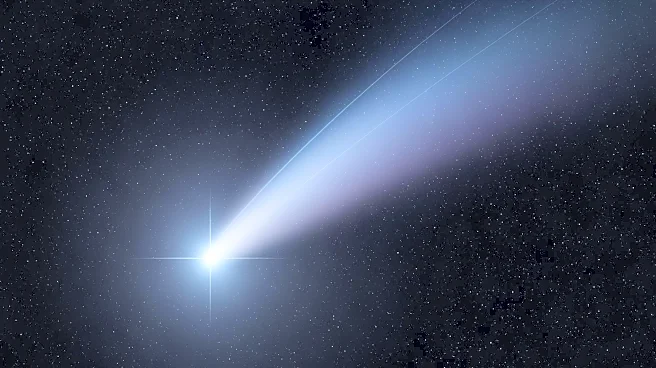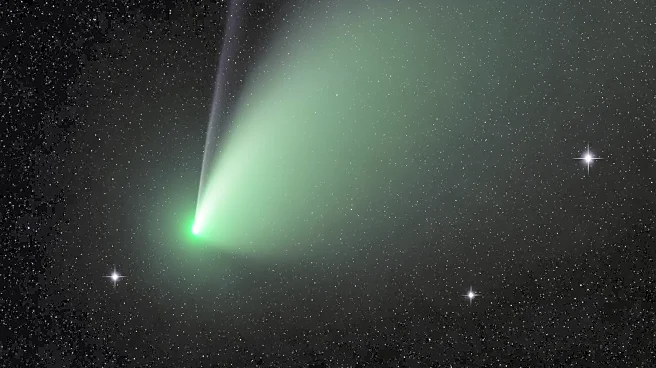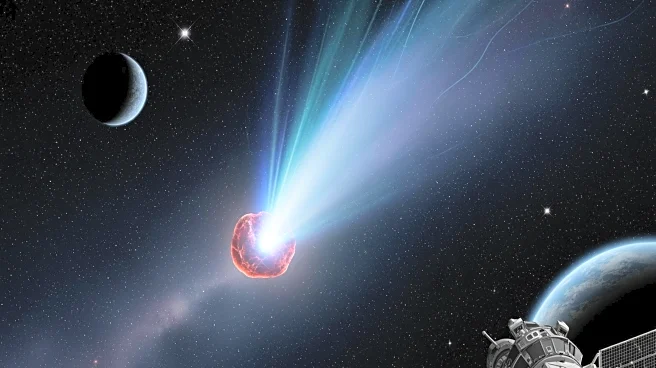What's Happening?
The European Space Agency's Solar Orbiter has provided scientists with unprecedented close-up images of the sun's magnetic field near its south pole, revealing surprising behavior. The spacecraft's observations,
taken over eight days in March 2025, show bright arcs created by magnetic structures moving toward the sun's edge at unexpectedly high speeds. This discovery indicates that the sun's magnetic field is migrating toward its poles much faster than previously predicted. The study, led by Sami Solanki from the Max Planck Institute for Solar System Research, utilized data from the Polarimetric and Helioseismic Imager and the Extreme Ultraviolet Imager to map the movement of hot plasma and magnetic fields across the solar surface. These findings offer new insights into the sun's 11-year magnetic cycle, which influences solar phenomena such as sunspots and solar flares.
Why It's Important?
Understanding the sun's magnetic cycle is crucial for predicting solar activity that can impact Earth, including solar storms that affect satellite operations and power grids. The new data from Solar Orbiter fills a significant gap in knowledge about the sun's polar regions, which are essential to the global circulation of its magnetic field. This research could lead to improved models for forecasting solar weather, benefiting industries reliant on satellite communications and power infrastructure. The findings also enhance scientific understanding of the sun's magnetic engine, which shapes the solar system's environment.
What's Next?
The Solar Orbiter's continued observations are expected to provide further insights into the sun's polar regions, potentially leading to breakthroughs in solar physics. Researchers anticipate that ongoing studies will refine models of the sun's magnetic cycle, aiding in the prediction of solar events. The spacecraft's unique orbit allows it to observe areas of the sun that are difficult to study from Earth, promising more discoveries about the sun's behavior and its effects on the solar system.
Beyond the Headlines
The study marks a new era in solar exploration, offering long-awaited data to understand the mechanisms driving the sun's magnetic cycle. The ability to observe the sun's poles directly could lead to advancements in solar physics and a deeper comprehension of the processes that govern the sun's influence on the solar system. This research highlights the importance of international collaboration in space exploration, as the Solar Orbiter's findings are the result of efforts by scientists across multiple countries.











